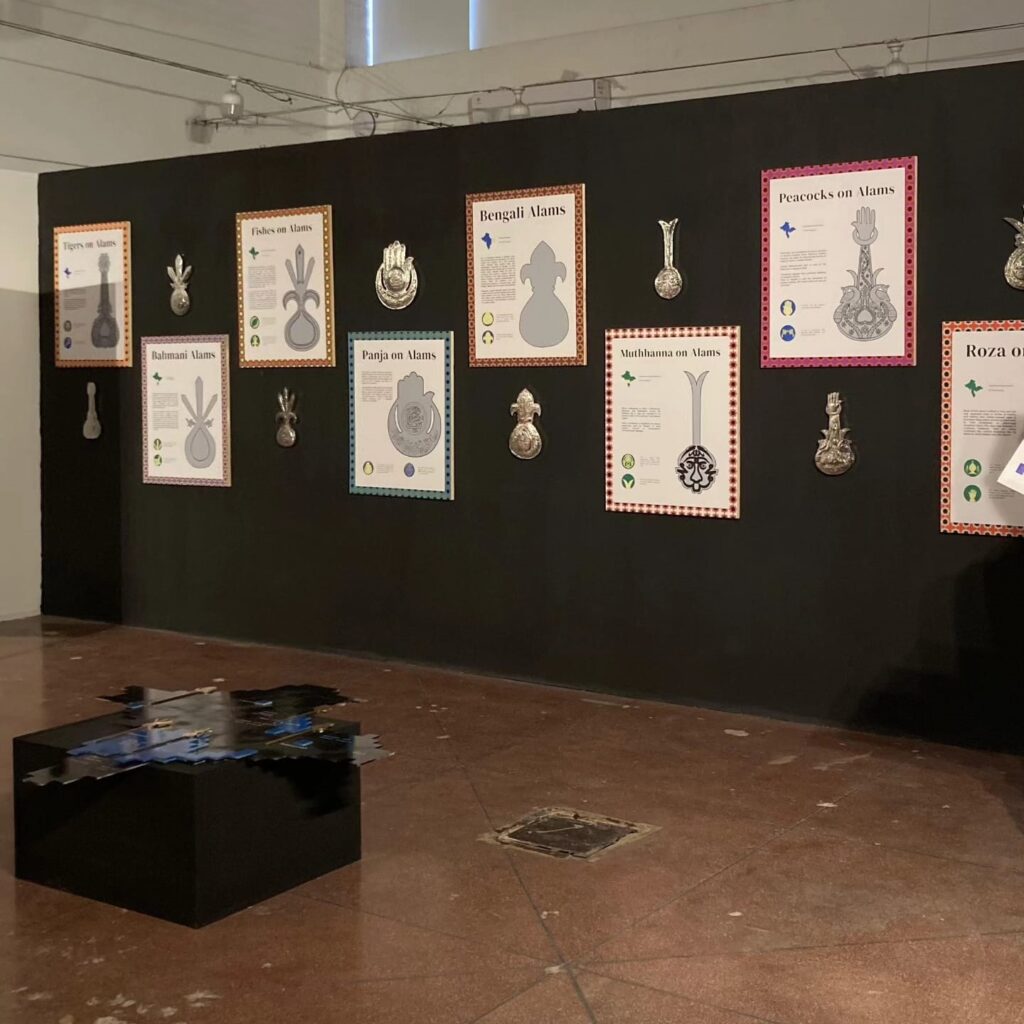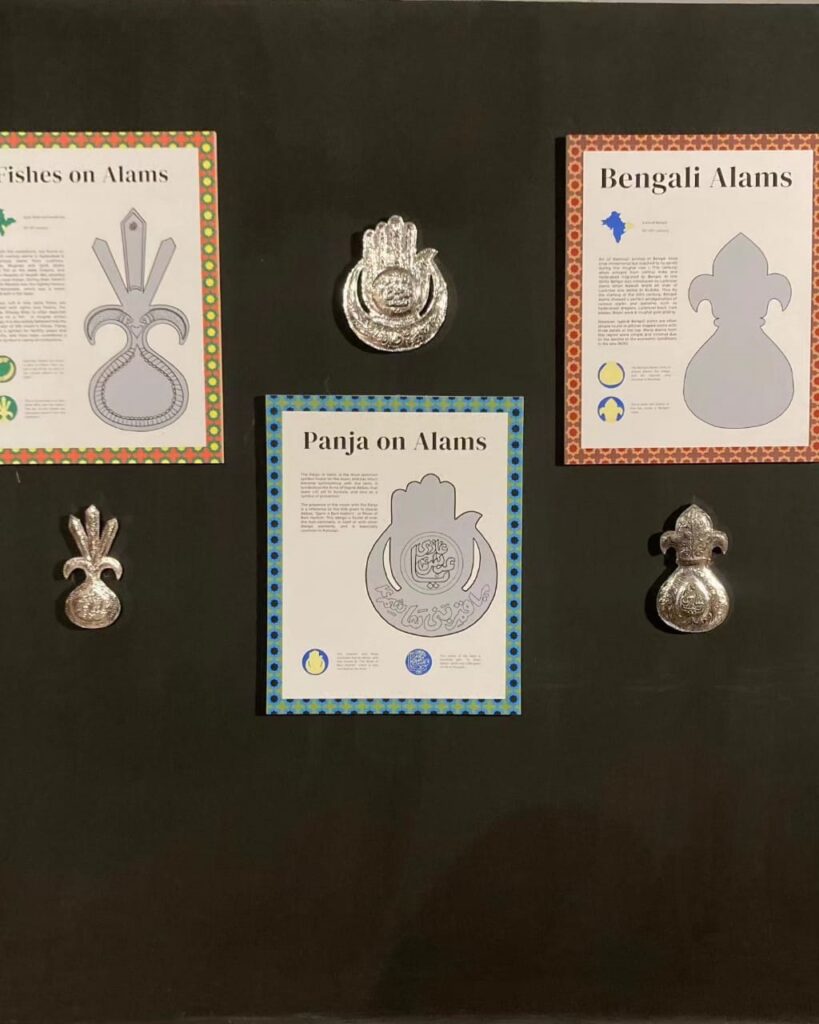An ‘alam (Arabic) or alem (Turkish) is a standard or flagpole in Islamic culture, typically topped with an ornate metal finial. Generally, ‘alam denotes a banner, but in the context of Islamic art, it can specifically refer to metal finials. For Shia Muslims, the ‘alam holds deep religious significance and is a central symbol of their faith.
Ariza Abbas’s project, “Ain se Alif,” offers profound insights into the historical and cultural significance of the ‘alam, particularly in South Asian history. The project highlights the intricate interplay of design, devotion, and identity. Through an anthropological design approach, Abbas examines the evolution of the ‘alam over 700 years within the Indian subcontinent, focusing on Pakistan, India, and Bangladesh.


The aim is to present an alternative understanding of South Asian history and design practices, rooted in the community and indigenous devotional practices of Azadari. Spanning various time periods, geographies, and languages, the ‘alam reflects not only the devotion of the communities that create and engage with it but also the rich history of South Asia.


















![A view of the Wadi al-Kabir neighbourhood in the Omani capital, Muscat [File: Philippe Lopez/AFP]](https://mmnews.tv/wp-content/uploads/2024/07/a-view-of-Muscat-75x75.jpg)

















